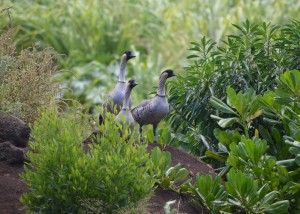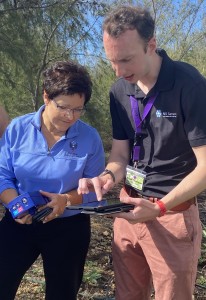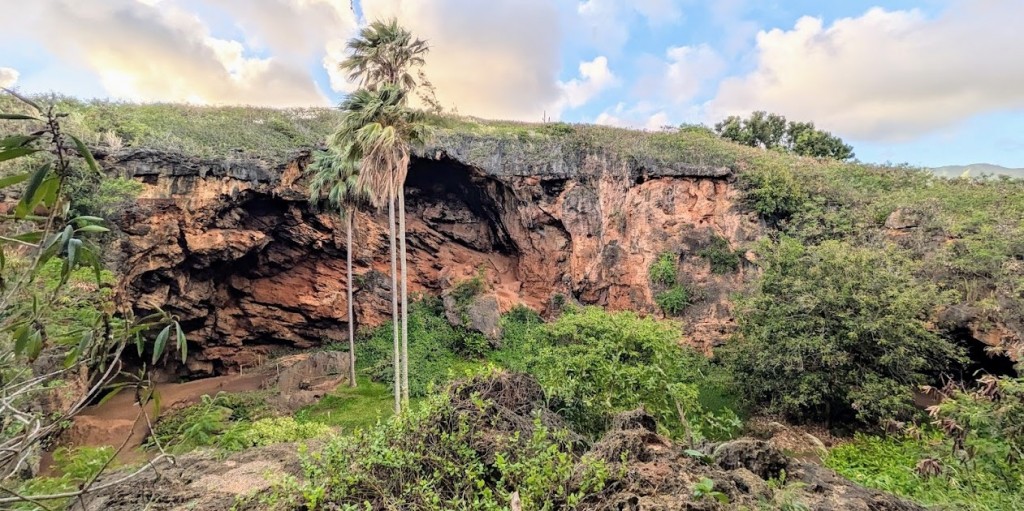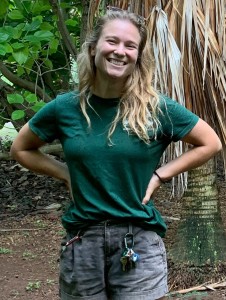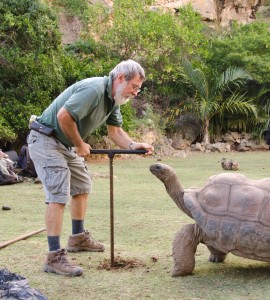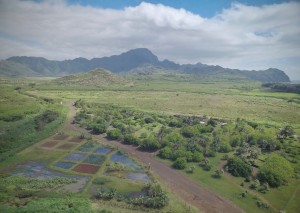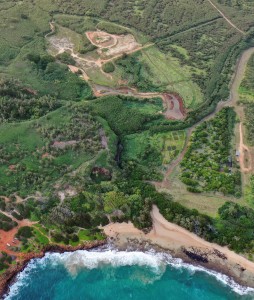
Recent oblique aerial drone imagery showing Makauwahi Cave Reserve with new quarry restorations in background, including three new ponds, native dry forest restorations, and new perimeter fence to exclude pigs and dogs. (Photo by Graham Talaber)
Over the centuries, Makauwahi Cave has recorded all kinds of disasters in its sediment layers. Abundant evidence for hurricanes, a tsunami, floods, extinction events, warfare, and erosion are all there. What will the sediments of our time record? Perhaps some archaeologist of the future will uncover there a thin layer containing…face masks and hand sanitizer!
Since March of 2020, life at the cave has been under the powerful thumb of the COVID-19 pandemic. So far, it has not stopped progress at the cave in research, conservation, or public outreach. Like virtually every place on earth, visitation has been affected. We have had many months when all visitation was local, then additional months of limited public access for visitors from off-island, including masks and social distancing. It has been a tough 22 months, and counting, but the Reserve has gone on thriving despite the perturbations of the human world.
Just as things were about to fall apart in early 2020, we were excitedly initiating a new project sponsored by the Wildlife Conservation Society’s Climate Adaptation Fund and the Doris Duke Foundation, entitled “Coping with Climate Change at Makauwahi Cave Reserve.” The plan was to use the abandoned limestone quarry next to the cave as the substrate for building three new wetlands and planting a native plant reforestation project. We did this, and with additional support from County, State, and Federal sources were able to do a lot more in the Reserve, including building new low-impact composting toilet facilities, installing four wash stations around the property for improved public hygiene, constructing a new maintenance building, and creating a parking lot for visiting buses and overflow parking.
Read More…
By David Burney
